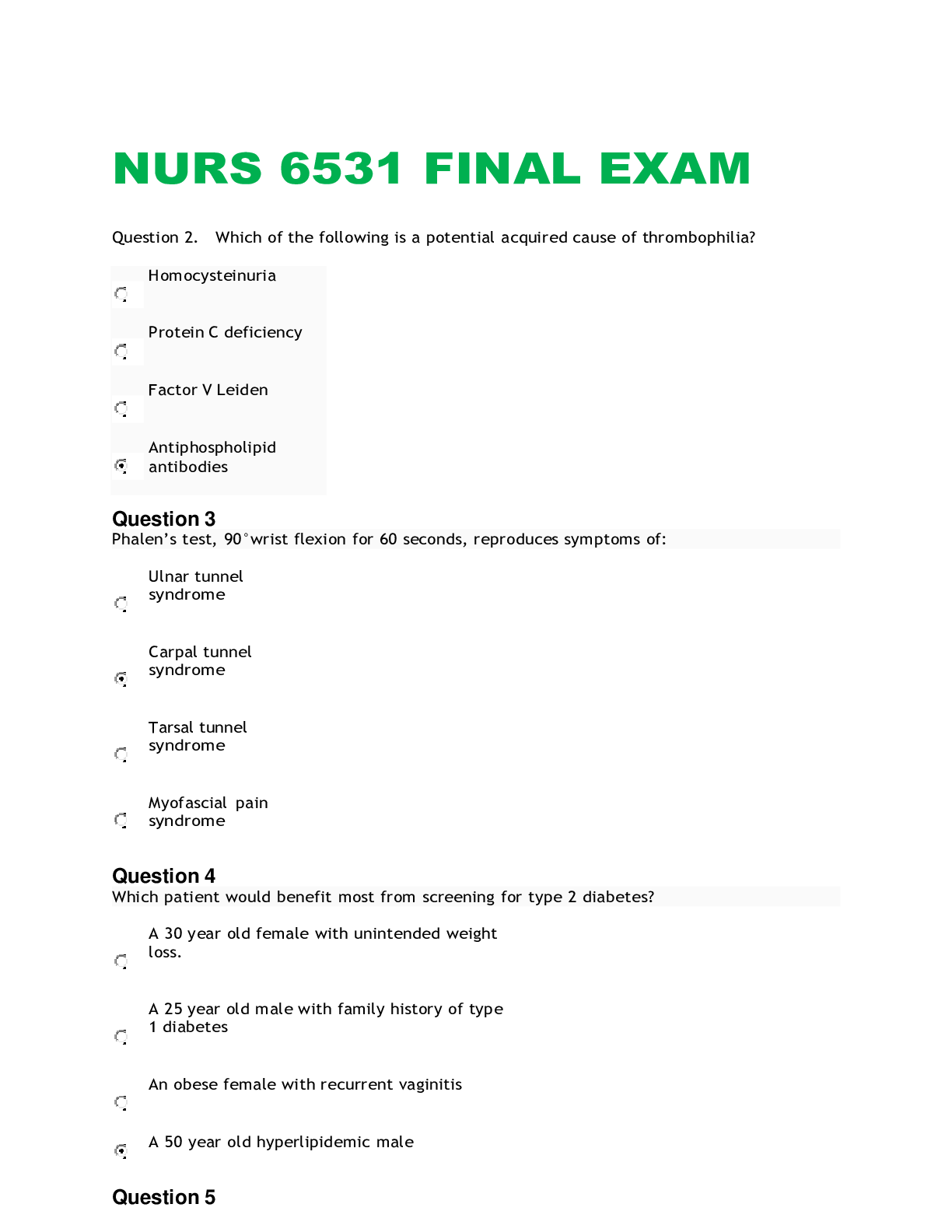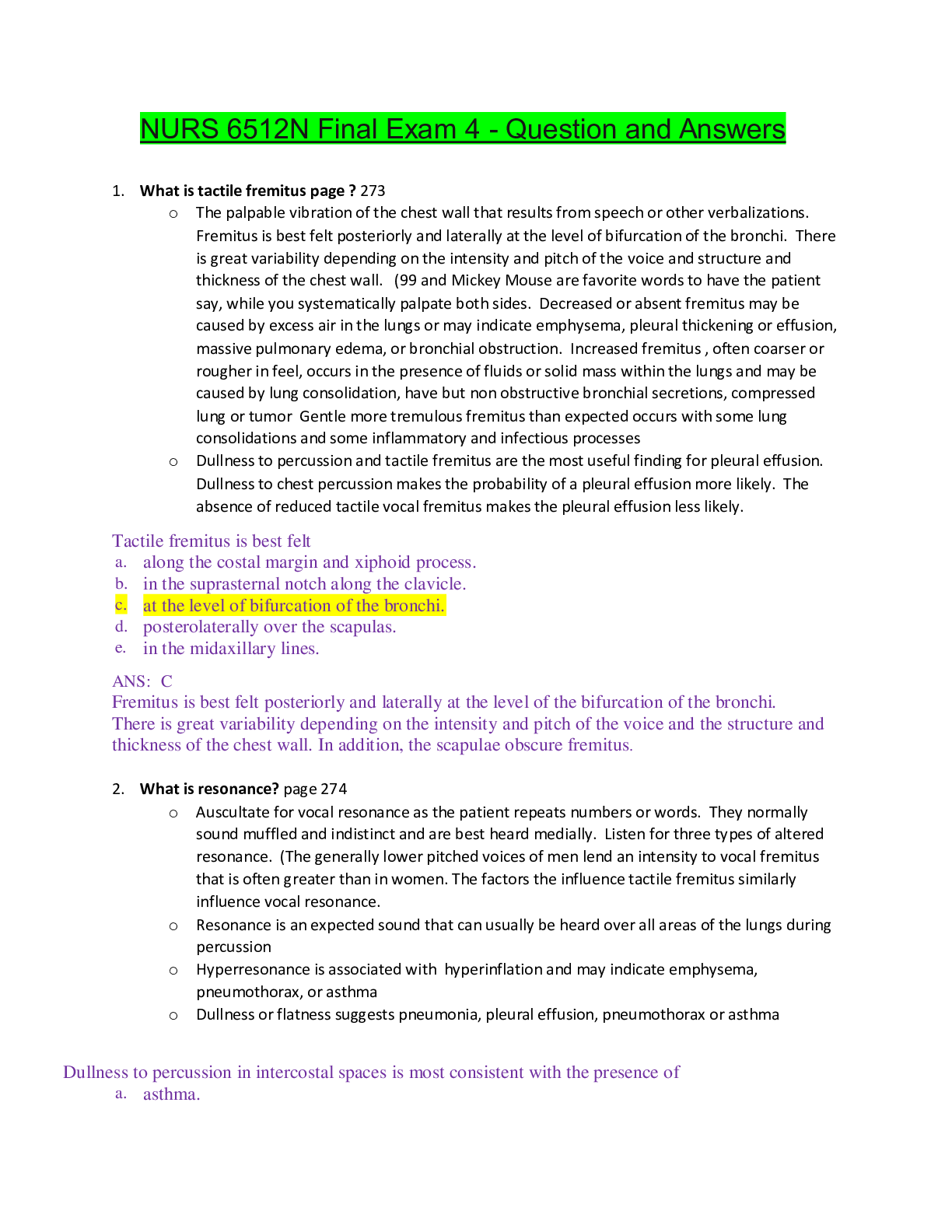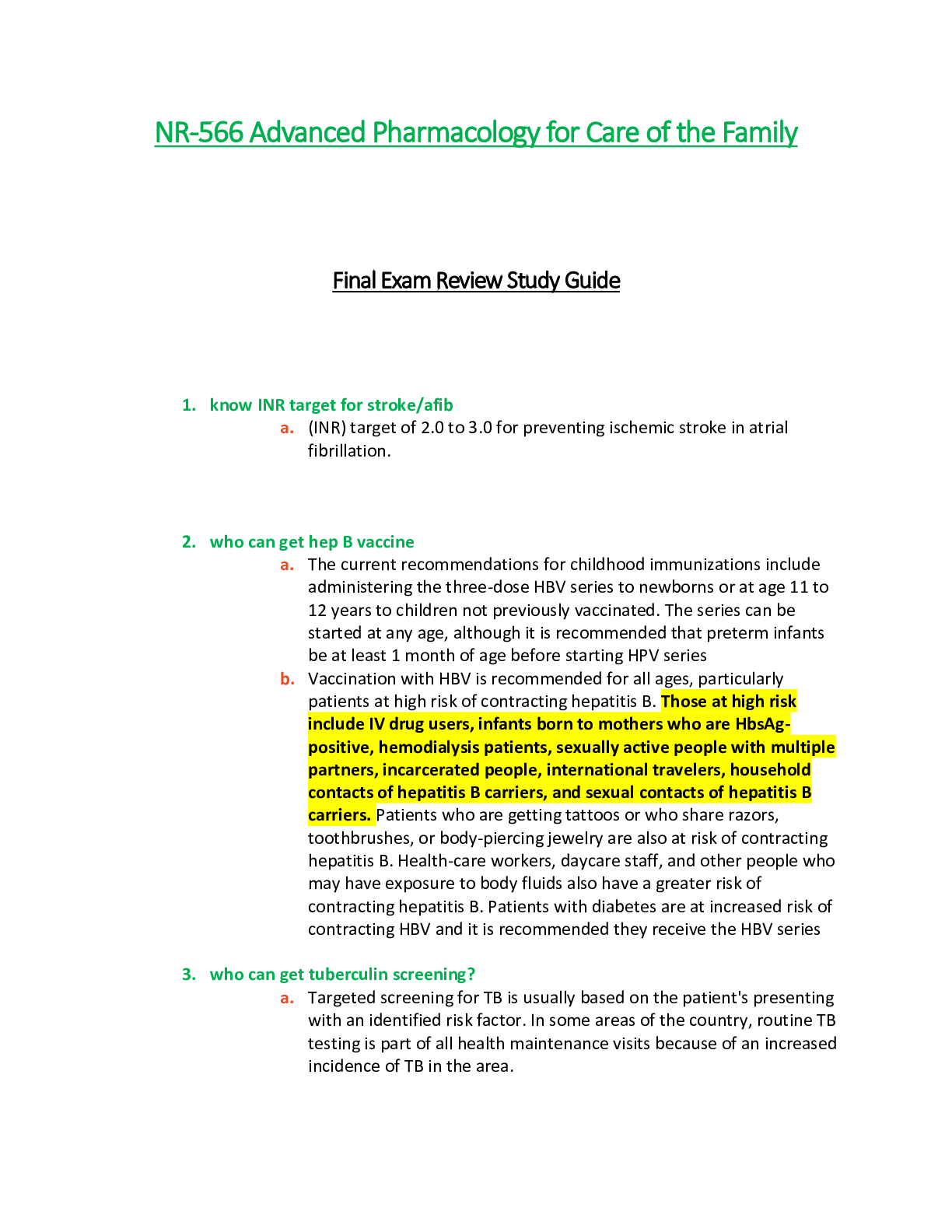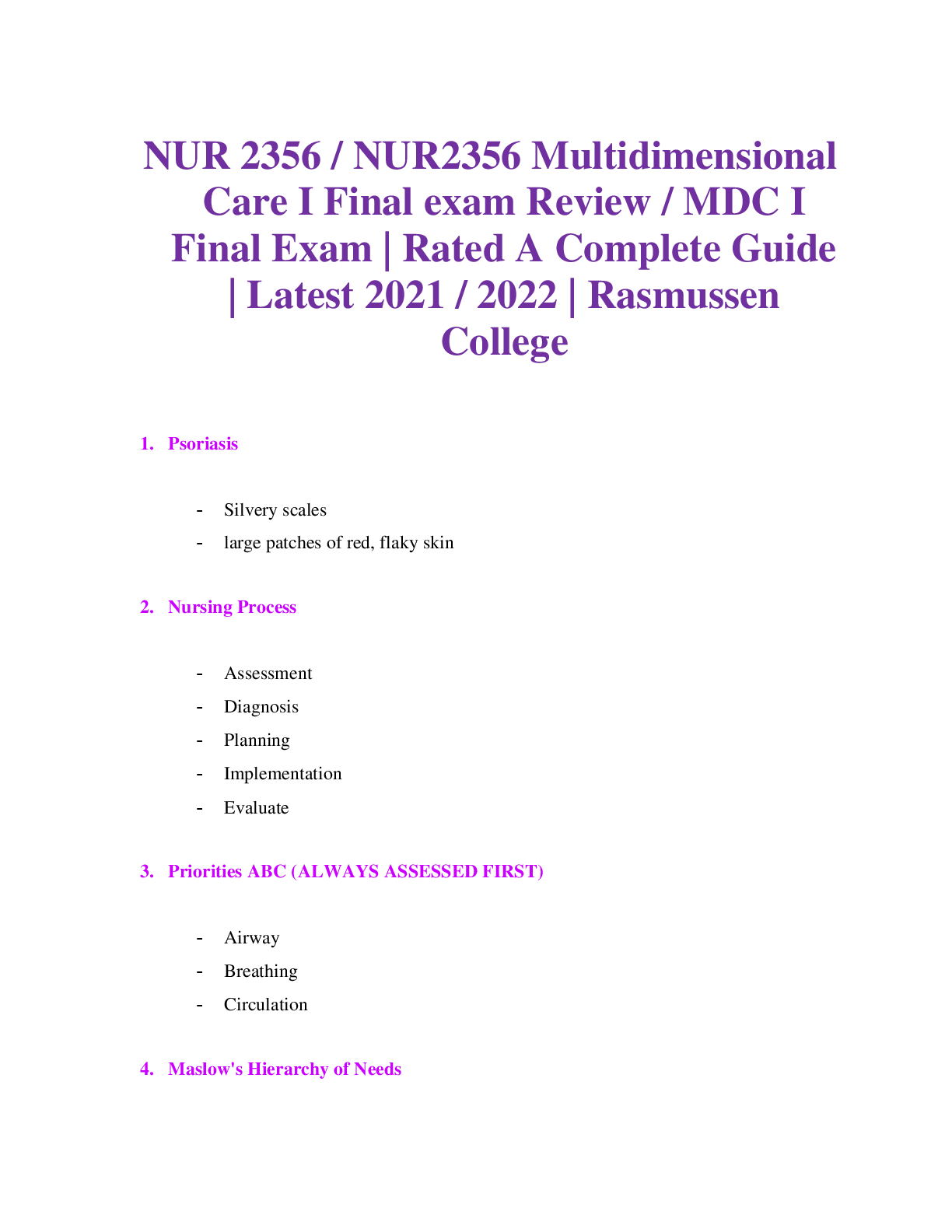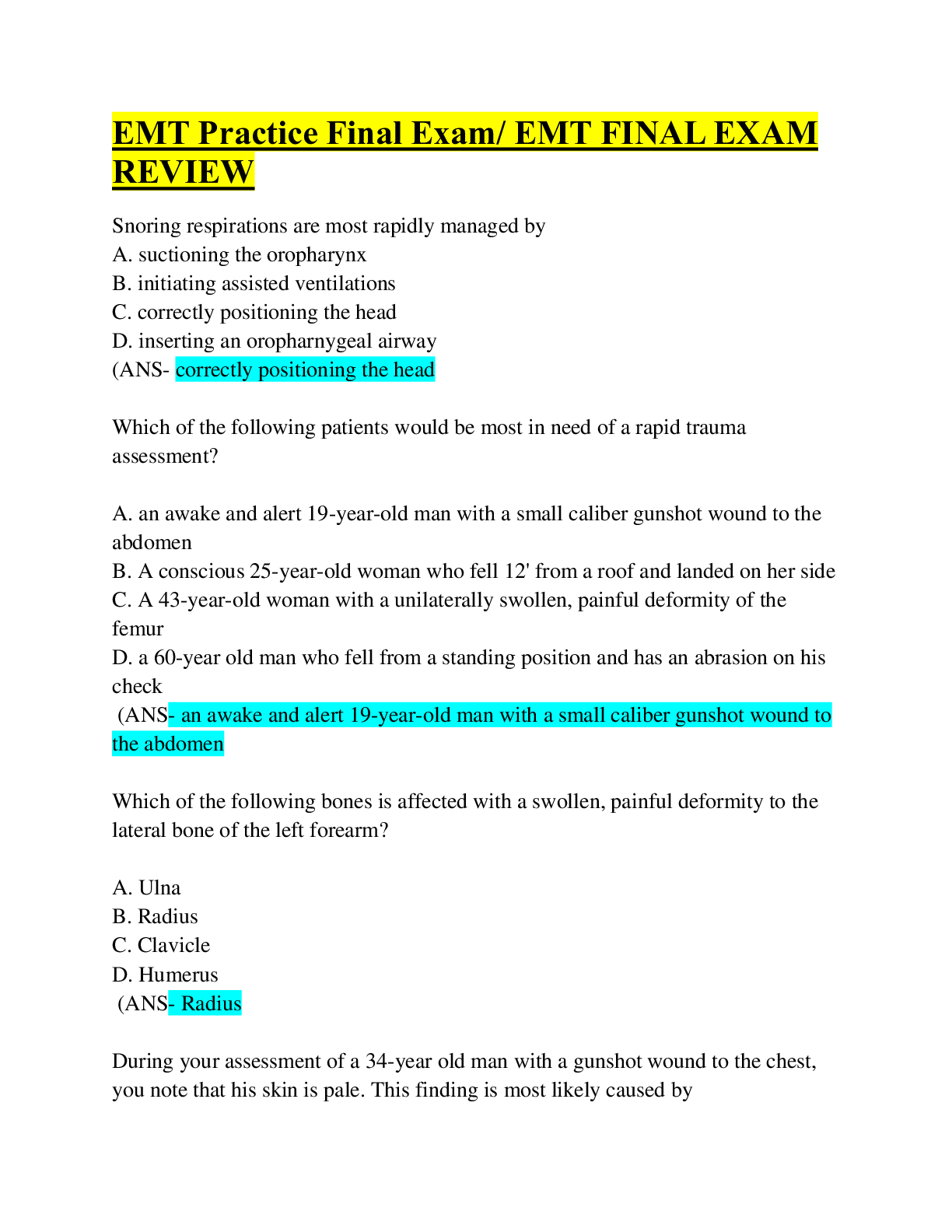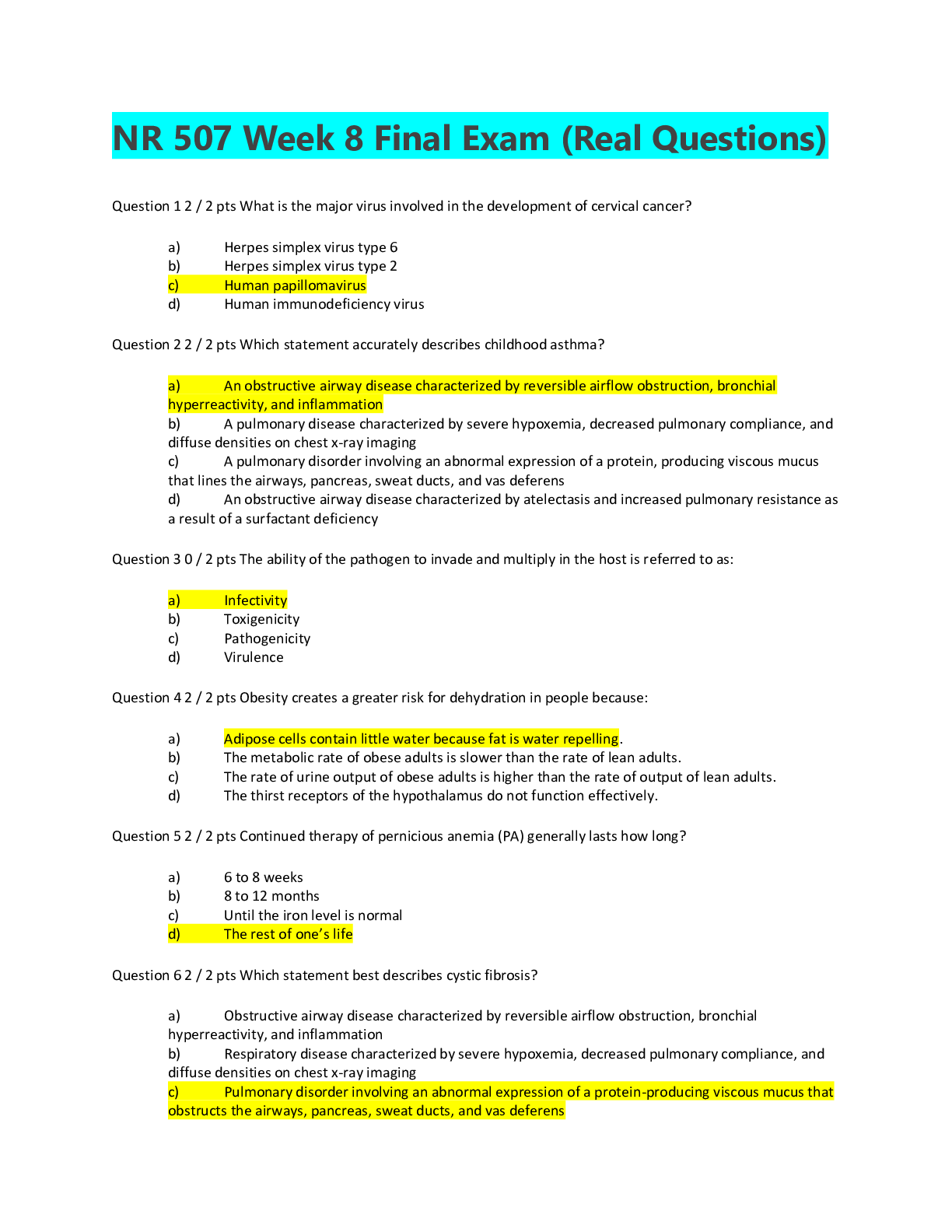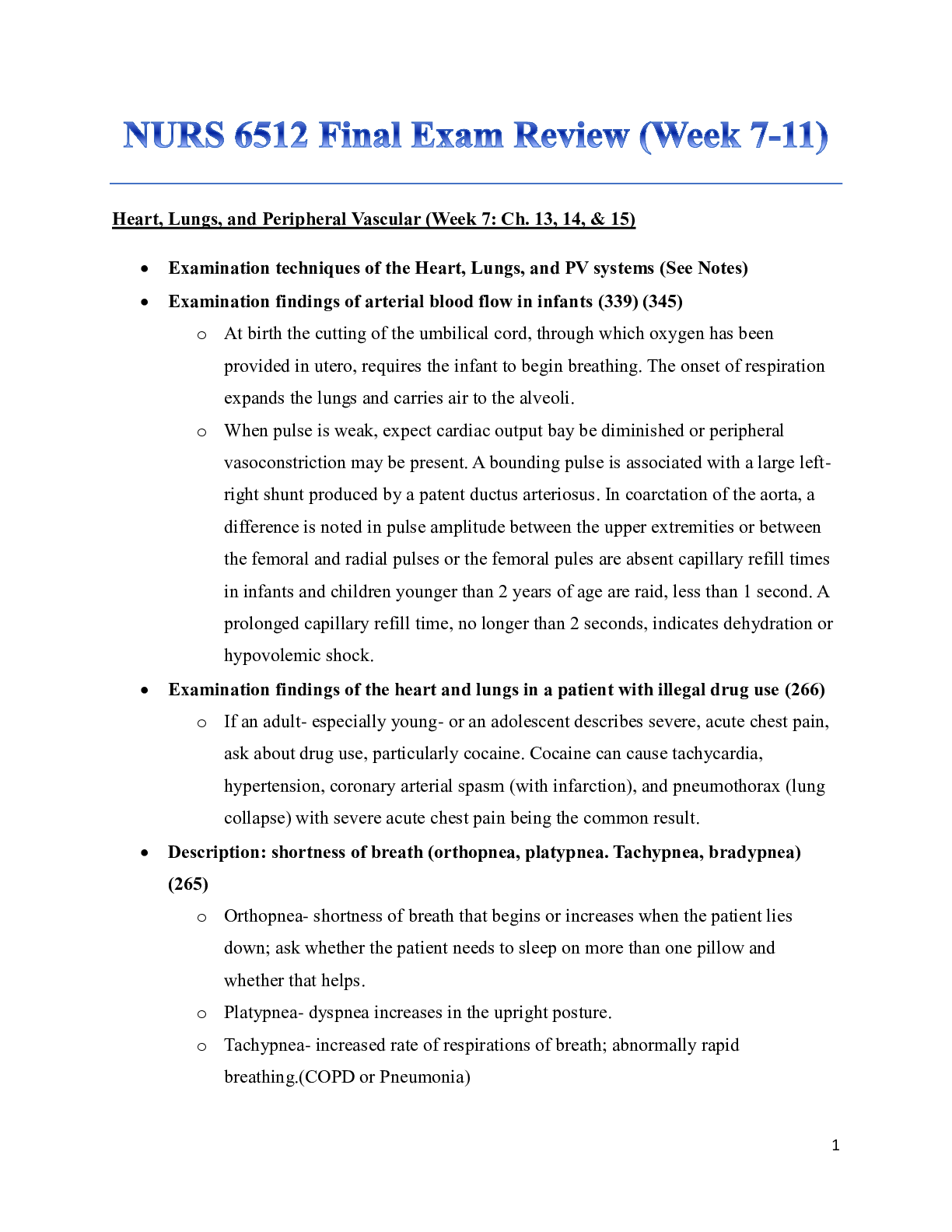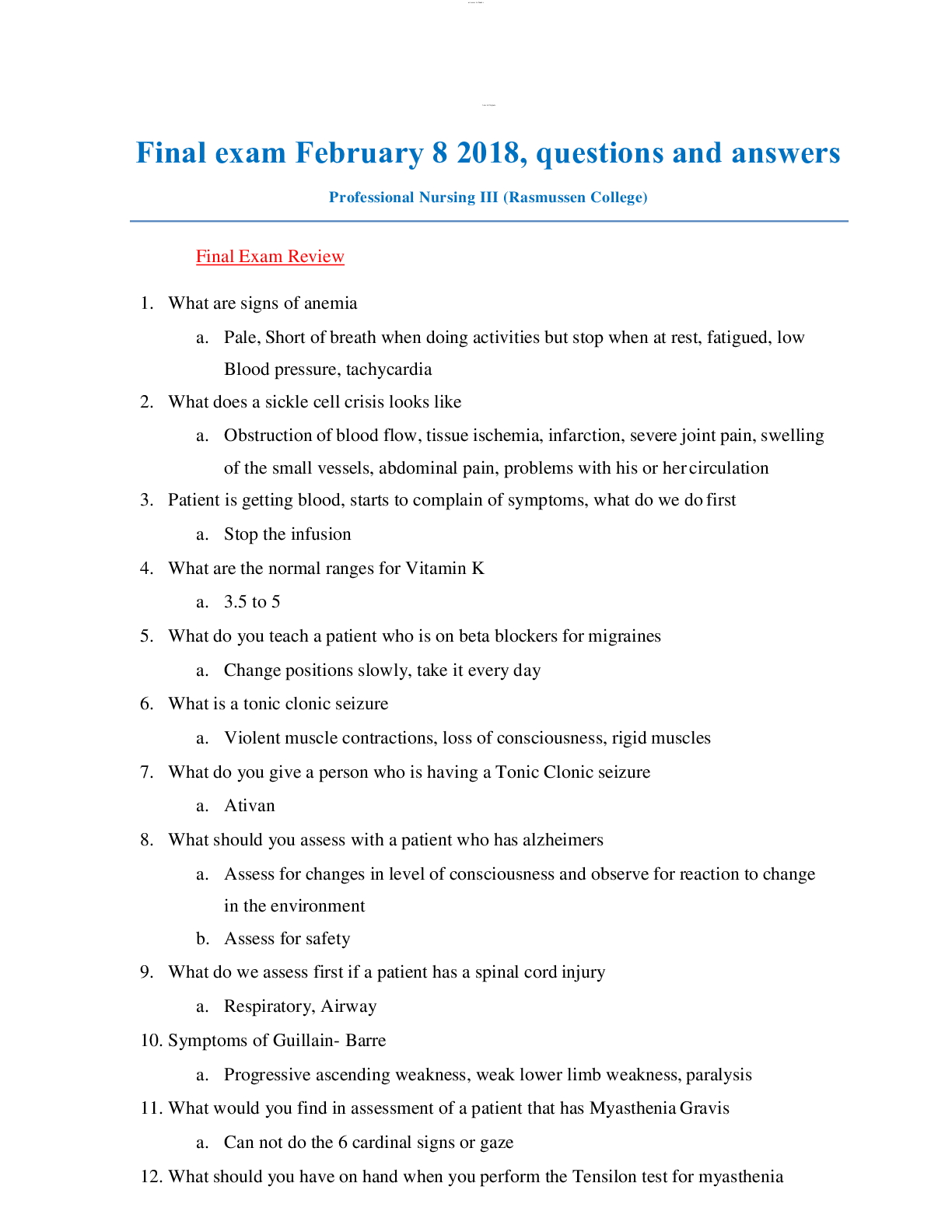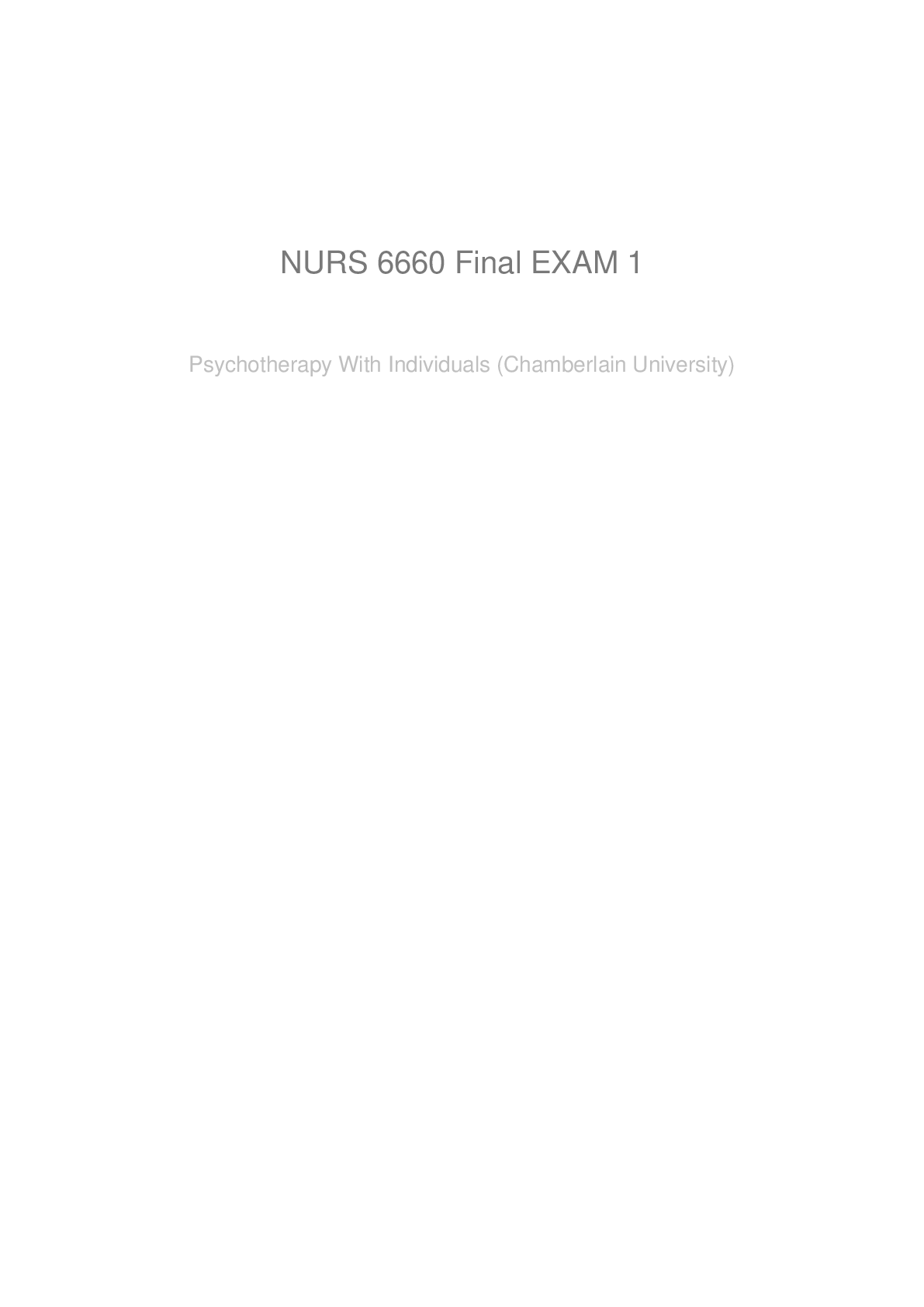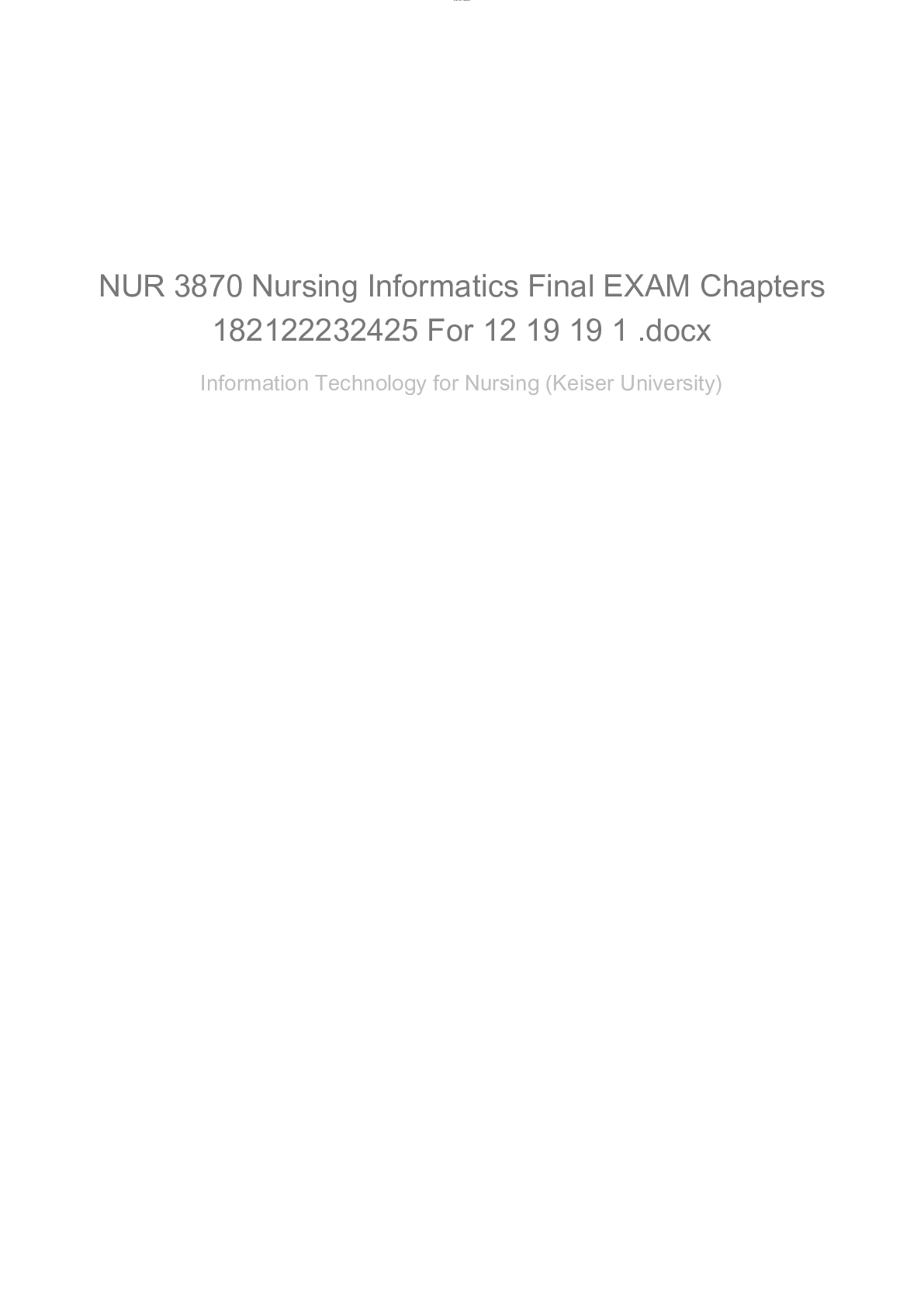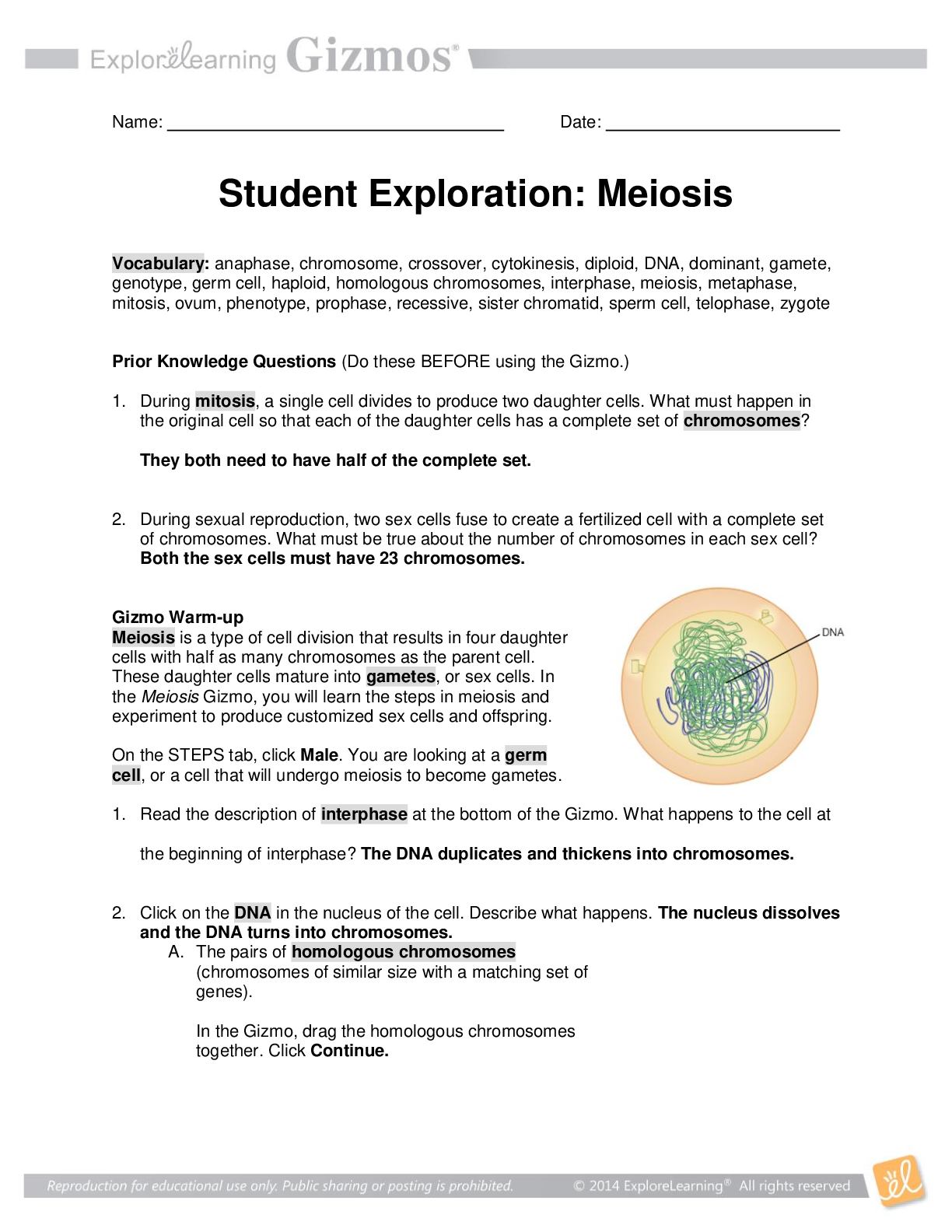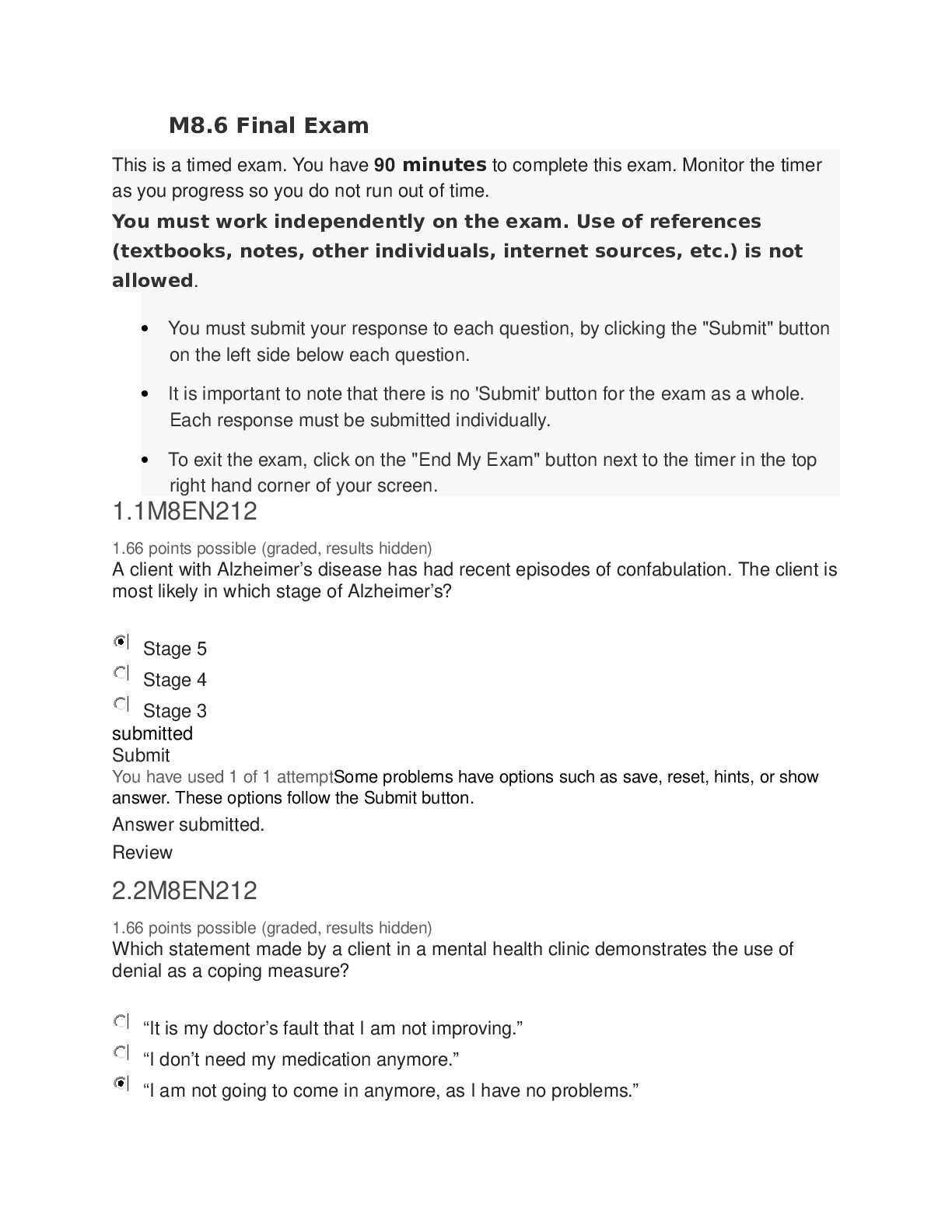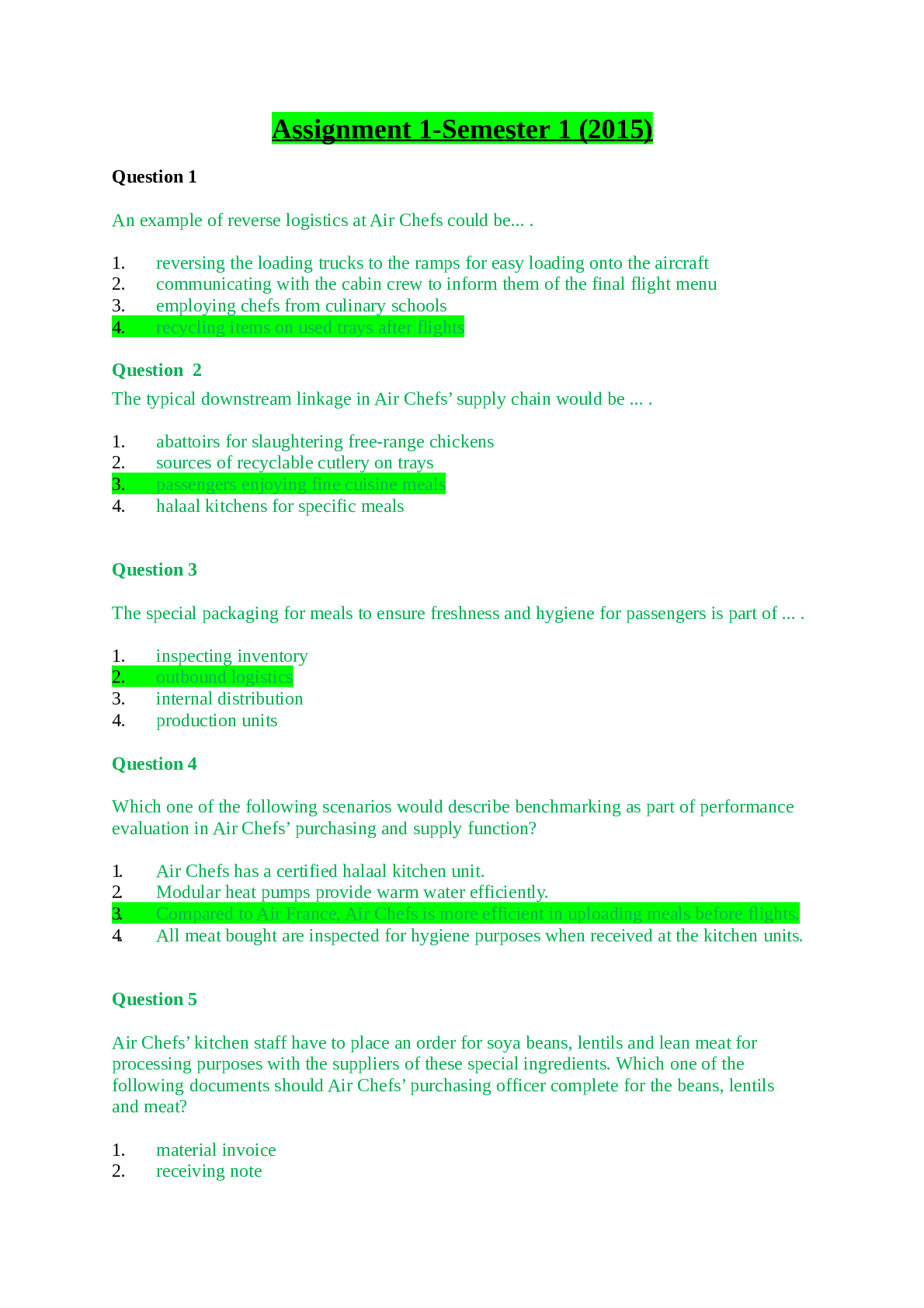Biology > Final Exam Review > Chamberlain College of Nursing BIOS 255 A&P 3 FINAL filled out Bios 255 Final Exam Review (All)
Chamberlain College of Nursing BIOS 255 A&P 3 FINAL filled out Bios 255 Final Exam Review
Document Content and Description Below
Chamberlain College of Nursing BIOS 255 A&P 3 FINAL filled out Bios 255 Final exam review Be familiar with left and right sided heart failure and what the consequences are (remember the case ... study that we did in lecture and lab?) (698) Left side: One cause of mitral insufficiency, in which there is backflow of blood from the left ventricle into the left atrium, is mitral valve prolapse (MVP). In MVP one or both cusps of the mitral valve protrude into the left atrium during ventricular contraction. Mitral valve prolapse is one of the most common valvular disorders, affecting as much as 30% of the population. It is more prevalent in women than in men, and does not always pose a serious threat. The left side of the heart receives blood rich in oxygen from the lungs and pumps it to the remainder of the body. As the ability to pump blood forward from the left side of the heart is decreased, the remainder of the body does not receive enough oxygen especially when exercising. This results in fatigue. In addition, the pressure in the veins of the lung increases, which may cause fluid accumulation in the lung. This results in shortness of breath and pulmonary edema. Know the different types of immunity – active vs passive, natural vs artificial. First, let us define the following terms and then we can put them together. The term active generally means that your body is producing antibodies by exposure. Passive is a term where the antibodies are being transferred to you, i.e. breast milk IgA to infant. Natural terms the introduction of the antigen via exposure. Artificial is the introduction of antigens/antibodies via an altered state of the microbe/ antibody. *****Know the neural mechanisms of respiratory control including the DRG and PRG. (872) Respiratory center- Neurons in the pons and medulla oblongata of the brain stem that regulate breathing. It is divided into the medullary respiratory center and the pontine respiratory center. Within the medullary respiratory center, you find two respiratory groups, the ventral respiratory group (AKA expiratory area) and the dorsal respiratory group (AKA inspiratory area). The DRG generates impulses to the diaphragm via the phrenic nerves and the external intercostals via the intercostal nerves. These impulses trigger contraction of these muscles which in turn execute inhalation. Know the process of inhalation and exhalation (the steps involved) (FIG. 24.13) During Inhalation, the diaphragm contracts and the external intercostals contract. The chest cavity expands, and the alveolar pressure drops below atmospheric pressure. Air flows into the lungs in response to the pressure gradient and the lung volume expands. During deep inhalation, the scalene and sternocleidomastoid muscles expand the chest further, thereby creating a greater drop in alveolar pressure. *******Know the functions of the lymphatic and immune systems. *****The primary functions of the lymphatic is system is to 1. Drain excess interstitial fluid, 2. Transport dietary lipids and lipid-soluble vitamins, and 3. Carry out immune response. Know the precursor cells for platelets, lymphocytes, etc. The precursor cells for platelets are megakaryocytes. Membranes surrounding the heart. (690) The pericardium surrounds and protects the heart. Covers the heart muscle. The pericardium consists of two main parts: (1) the fibrous pericardium (tough, inelastic, dense irregular connective tissue) -- prevents overstretching of the heart, provides protection, and anchors the heart in the mediastinum. and (2) the serous pericardium (double membrane of outer parietal layer and inner visceral layer, fluid-lubricating part between these layers, reduces friction as the heart moves.) Different classes of antibodies and where they are found, and their structure. IgG- Most abundant (80% of antibodies in blood). Found in the blood, lymph and intestines. Monomer. Protects against bacteria and viruses by enhancing phagocytosis, neutralizing toxins, and triggering complement system. The ONLY antibody that will cross placenta. Function of RBCs, T-cells, B-cells, Cytotoxic T cells, Natural killer cells RBCs: Transport oxygen bound to hemoglobin molecules; also transport small amount of carbon dioxide T-cells: -Plays a central role in adaptive immune response,-Activate both humoral and cellular arms,-Once primed by APC presentation of antigens, they help activate T and B cells, induce T and B cell proliferation, their cytokines recruit other immune cells ,-Amplifies the immune response of the innate immune system, -Activate macrophages (more potent killers), -Mobilize lymphocytes and macrophages, and attract other types of WBCs How hemolytic disease of the newborn occurs. (682) The most common problem with Rh incompatibility) If a small amount of Rh+ blood leaks from the fetus through the placenta into the bloodstream of an Rh- mother, the mother will start to make anti-Rh antibodies. Because the greatest possibility of fetal blood leakage into the maternal circulation occurs at delivery, the firstborn baby usually is not affected. If the mother becomes pregnant again, however, her anti-Rh antibodies can cross the placenta and enter the bloodstream of the fetus. If the fetus is Rh-, there is no problem, because Rh- blood does not have the Rh antigen. If the fetus is Rh+, however, agglutination and hemolysis brought on by fetal–maternal incompatibility may occur in the fetal blood. Describe how oxygen and carbon dioxide are transported in the blood with a special emphasis on the factors that affect the loading/unloading of these gases in the lungs vs. tissues. (867) Dissolved in plasma (1.5%) (= blood PO2) Remember, O2 is not very soluble in blood! 2. Bound to hemoglobin in RBCs (98.5%) The final step in the exchange of gases between the external environment and the tissues is the transport of oxygen and carbon dioxide to and from the lung by the blood. Oxygen is carried both physically dissolved in the blood and chemically combined to hemoglobin. Carbon dioxide is carried physically dissolved in the blood, chemically combined to blood proteins as carbamino compounds, and as bicarbonate. ******Explain the neural control of ventilation including brain centers, sensory and motor signals. (872) Control of breathing is done by the respiratory system. The respiratory system can be broken down into two basic locations based on function, the Medullary Respiratory Center (medulla oblongata) and the Pontine Respiratory Group (pons). Define ventilation, external respiration and internal respiration. Be sure to identify their functions and where they occur. (856) The process of gas exchange in the body, called respiration, has three basic steps: ******Explain the various subclasses of antibodies - how they are similar, how they differ. (825) AKA Immunoglobulins (Ig). Most antibodies contain four polypeptide chains with two identical heavy chains and two light chains, a hinge region, stem region, variable regions, antigen-binding site, and a constant region. Antibodies neutralize antigens, immobilize bacteria, agglutinate and precipitate antigens, activate complement, and enhance phagocytosis [Show More]
Last updated: 1 year ago
Preview 1 out of 32 pages
.png)
Reviews( 0 )
Document information
Connected school, study & course
About the document
Uploaded On
Nov 07, 2022
Number of pages
32
Written in
Additional information
This document has been written for:
Uploaded
Nov 07, 2022
Downloads
0
Views
62





